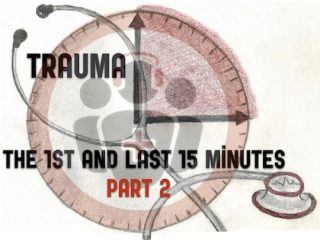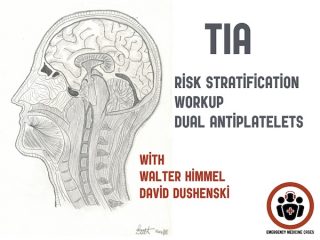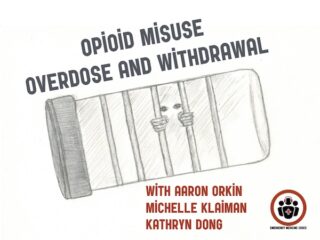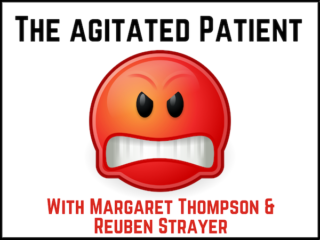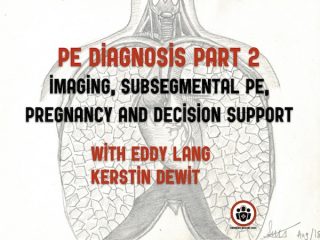
Ep 119 Trauma – The First and Last 15 Minutes Part 2
What should your resuscitation targets be in the first 15 minutes for trauma patients with hemorrhagic shock, neurogenic shock, severe head injury? When is a pelvic binder indicated? Is a bedsheet good enough? What are the most common pitfalls in binding the pelvis? What are the best ways to maintain team situational awareness during a trauma resuscitation? Should we rethink patient positioning for the trauma patient? What are the indications for transport to a trauma center? What is the minimal data set required before transfer? Which patients require a pelvic x-ray prior to transfer to a trauma center? What are the key elements of a transport checklist? What does the future hold for trauma care and many more...
Ep 118 Trauma – The First and Last 15 Minutes Part 1
In this part 1 of Trauma - The First and Last 15 Minutes, we answer questions such as: how should we best prepare our team, our gear and ourselves for the trauma patient? How does resequencing the initial trauma resuscitation save lives? How can we most readily identify occult shock, the silent killer in trauma? What are 7 actions to consider in the first 15 minutes of resuscitation? How can the concepts of "controlled resuscitation" and "resuscitation intensity" help us decide resuscitation targets and when to activate a massive transfusion protocol? and many more...
Ep 117 TIA Update – Risk Stratification, Workup and Dual Antiplatelet Therapy
Much has changed in recent years when it comes to TIA risk stratification, workup and antiplatelet therapy. In this podcast we use the overarching theme of timing to elucidate how to distinguish true TIA from the common TIA mimics, the importance of timing in the workup of TIA, why the duration of therapy with dual antiplatelet therapy and timing of starting anticoagulation in patient with atrial fibrillation, contributes to the difference between preventing catastrophic strokes and causing intracranial hemorrhage...
Ep 116 Emergency Management of Opioid Misuse, Overdose and Withdrawal
In this episode Dr. Kathryn Dong, Dr. Michelle Klaiman and Dr. Aaron Orkin discuss the latest in naloxone in opioid overdose cardiac arrest and altered LOA, a 5-step approach to ED opioid withdrawal management and how we can improve mortality and morbidity in patients with opioid use disorder in the era of the opioid epidemic...
Ep 115 Emergency Management of the Agitated Patient
Managing acutely agitated patients can cause anxiety in even the most seasoned emergency doctor. These are high risk patients and they are high risk to you and your ED staff. It’s important to understand that agitation or agitated delirium is a cardinal presentation – not a diagnosis. There is pathology lurking beneath - psychiatric, medical, traumatic and toxicological diagnoses driving these patients and we just won’t know which until we can safely calm them down...
Ep 114 Pulmonary Embolism Challenges in Diagnosis 2 – Imaging, Pregnancy, Subsegmental PE
In Part 1 of Pulmonary Embolism Challenges in Diagnosis Drs. Helman, Lang and DeWit discussed a workup algorithm using PERC and Wells score, the bleeding risk of treated pulmonary embolism, pearls in decision making on whether or not to work up a patient for pulmonary embolism, how risk factors contribute to pretest probability, the YEARS criteria and age-adjusted D-dimer. In this Part 2 we answer questions such as: what are the important test characteristics of CTPA we need to understand? Which patients with subsegmental pulmonary embolism should we treat? When should we consider VQ SPECT? What is the best algorithm for the work up of pulmonary embolism in pregnant patients? How best should we implement pulmonary embolism diagnostic decision tools in your ED? and many more…

